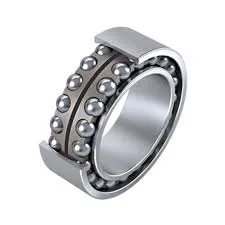
નવેમ્બર . 07, 2024 23:19 Back to list
Dimensions and Specifications of 6300 Series Ball Bearings for Engineering Applications
Understanding 6300 Bearing Dimensions A Comprehensive Guide
Bearings play a crucial role in various mechanical systems, providing necessary support and reducing friction between moving components. Among the many types of bearings, the deep groove ball bearing series, including the 6300 series, is widely used in different applications due to its versatility and reliability. This article aims to provide an in-depth understanding of the dimensional specifications and characteristics of the 6300 bearing series, enabling engineers and technicians to make informed decisions regarding their applications.
Overview of the 6300 Series Bearings
The 6300 bearing series is characterized by its deep groove design, allowing for both radial and axial loads. These bearings are well-suited for high-speed applications, making them a popular choice in areas such as automotive, industrial machinery, and electrical appliances. The 6300 designation specifies certain dimensional characteristics, which are critical for matching the bearing to its intended application.
Key Dimensions of 6300 Bearings
The standard 6300 series includes various models, but the primary dimensions remain consistent across the series
. The key dimensions to consider are
1. Bore Diameter (d) This is the inner diameter of the bearing, which fits onto the shaft. For the standard 6300 series, the bore diameter typically measures 10 mm to 50 mm, depending on the specific model.
2. Outer Diameter (D) The outer diameter is the total width of the bearing when measured from the outer edge. For the 6300 series, this diameter usually ranges from 35 mm to 110 mm.
3. Width (B) This dimension refers to the thickness of the bearing. The width for the 6300 series usually varies between 11 mm and 24 mm, again depending on the specific bearing model.
6300 bearing dimensions

4. Dynamic Load Rating (C) This figure represents the maximum load that the bearing can withstand while rotating at a defined speed. The dynamic load ratings for the 6300 series can range widely, with higher-rated bearings designed for more demanding applications.
5. Static Load Rating (C0) Similar to the dynamic load rating, this value indicates the maximum load the bearing can sustain while stationary. It is an important consideration for applications where the bearing may be subjected to heavy loads when not in motion.
Additional Features
Apart from these basic dimensions, many 6300 bearings come equipped with additional features. Some may include shields or seals (designated by the suffix 'Z' for shields or '2RS' for rubber seals) that protect the bearing from dust and moisture, extending its operational lifespan. Bearings in the 6300 series can also be found in various materials, including steel and ceramic, offering flexibility based on operating conditions.
Applications of 6300 Bearings
Due to their robust design and versatile dimensions, 6300 bearings are employed in a vast range of applications. Common uses include
- Electric Motors Used in stators and rotors for efficient performance. - Pumps Providing reliable support under different load conditions in various pumping systems. - Automotive Components Found in wheel hubs and transmission systems to ensure smooth operation.
Conclusion
Understanding the dimensions and characteristics of 6300 bearings is essential for engineers and technicians involved in designing and maintaining machinery. The 6300 series, with its reliable performance under various loads and speeds, serves a wide range of industrial applications. By selecting the appropriate bearing size and type, one can ensure optimal functioning and longevity of their mechanical systems. Whether for new designs or maintenance of existing equipment, taking a closer look at the specifications and potential application of 6300 bearings can lead to improved efficiency and effectiveness.
Latest news
-
Grooved Ball Bearing Design and Functionality
NewsJun.04,2025
-
Concrete Mixer Bearing Load Capacity Testing
NewsJun.04,2025
-
6004 Bearing Dimensions in Robotic Joint Designs
NewsJun.04,2025
-
Advantages of Single-Row Deep Groove Ball Bearings
NewsJun.04,2025
-
Applications of Deep Groove Ball Bearings in Automotive Systems
NewsJun.04,2025
-
Innovations in Bearing Pressing Machine Design
NewsJun.04,2025
